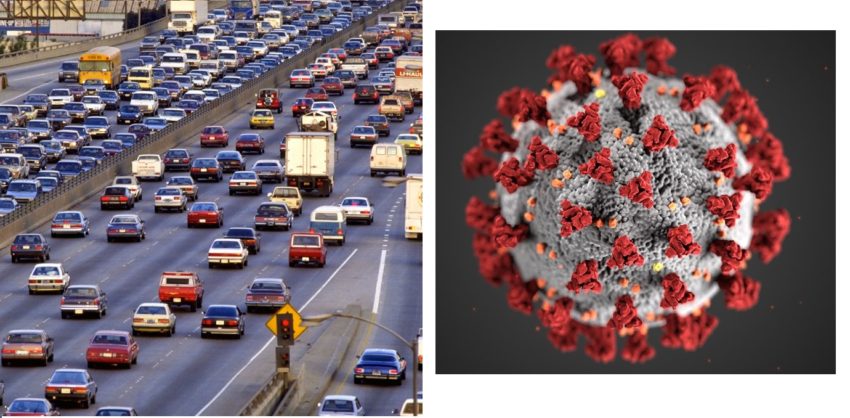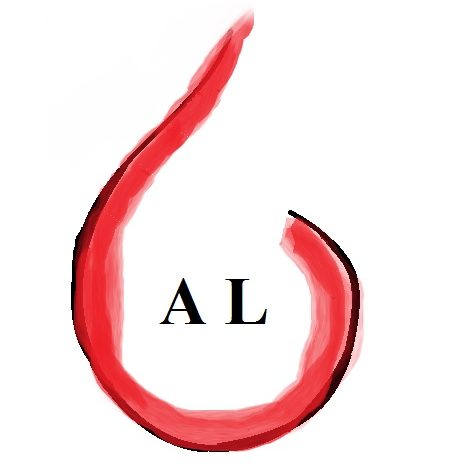User Optimized vs. System Optimized was first drafted here, but first published at aFIREofFaith.com.

Engineers get really good at thinking in terms of systems. Operations research describes the method of expressing what happens in the world through mathematical models. This can be used to make systems optimized for either the user or the system itself. From a task as small as analyzing traffic patterns to behavior during a pandemic, there is a major difference if we can optimize these systems.
Optimizing Transportation
It is amazing to see the diverse systems that have developed to move people around the world from point A to point B. It was also interesting to see how those systems developed, and what made them work.
Off the top of my head, personal cars probably had the largest impact on the world’s transportation systems. Cities once were designed to be walked in. Cities designed after cars are built for vehicles to get in and out. Even the greatest cities for public transit have a way of getting cars to the system. There are some very interesting statistics showing the use of each mode of transit elsewhere in the world. Some areas, like Scandinavia or portions of Asia, are champions for the bicycle, but overall private vehicles reign.
In the United States
In most of the United States, people travel by car. At least that is outside of major cities.
Where I Live
Where I live, there is one highway that everyone in the area commutes on. The next option is the main road that has a string of stoplights every few miles as it winds through the woods. Option 3 is the train or bus system, but sadly this is not really an option for work, as the times that public transit runs would only allow me to work a five hour day, showing up late and leaving right after lunch.
Optimizing the System
System Optimized
System optimizing is what us engineers love to dream of. Everyone travelling from A to B would be spaced out evenly. They will merge on to roads seamlessly, and a sufficient number of individuals will choose alternative methods of travel, that while they may take longer or cost more, keep the whole system from clogging.
Things obviously change when unexpected events happen, but we can dream.
User Optimized
User optimization is what actually happens in real life. Though the total system might work better if someone sacrificed and waited for the bus, each traveler is realistically going to choose what is best for them.
Balancing the System
By everyone choosing the path that is fastest and cheapest, the preferred path gets clogged and no longer becomes the fastest and cheapest way. This is where things get fun.
Highway vs. Back Roads
In my imaginary example, lets create a system with fake numbers at rush hour to see what this looks like. I am going to assume that 5000 workers in their personal cars are getting off work and heading the same general direction, either on the highway or the back road.
Highway Set-Up
To start, I thought about an empty highway. It might take someone in this fake scenario 20 minutes to get home. It stays that way until there are 2500 people merging on in an hour. That is about 40 cars/minute or just under 1 car/second. You could imagine that things will start to slow down.
I estimated that for every 250 people over 2500, 5 minutes will be added to each highway traveler’s commute. Then, 10 minutes for every 250 after 4000.
Back Road Set-Up
With all of the stop lights, the back road will take our travelers 40 minutes unhindered. However, this road clogs much quicker, so after 1000 drivers, the time starts going up about 15 minutes for each additional 1000 people.
Costs
My cost estimates were just based on the highway being a little bit further out of the way and the higher speeds will give a less fuel efficient drive. However, as traffic starts to back up, there is more breaking and idling that will cause costs of running the engine to go up.
The Math
- Path I – Highway, Faster but more miles
- 0 – 2500 people/hour -> t=20 minutes, c=$8
- 2500 – 4000 people/hour -> t = 20 + 0.02*(P-2500), c = $8 + 0.002*(P-3500)
- 4000+ people/hour, t = 50 + 0.04*(P-4000), c = 11 + 0.005*(P-4000)
- Path II – Main Road, slower but less miles
- 0 – 1000 people/hour, t=40 minutes, c=$6
- 1000+ people/hour, t=40+0.025*(P-1000), c=6+0.001*(P-1000)
The Results
Time Optimization
To optimize the system for time, 3250 workers must drive the highway and 1750 must choose to take the back road. This will result in the following:
- Path A – 35 minute drive, $9.50, 3250 people
- Path B – 58.75 minute drive, $6.75, 1750 people
- Total Time – 3609.375 hours, or just over 43 minutes per person
- Total Cost – $42,687.50 or $8.54 each


Cost Optimization
Optimizing for cost gives 2500 for A and 2500 for B. This looks like this:
- Path A – 20 minute drive, $8, 2500 people
- Path B – 77.5 minute drive, $7.50, 2500 people
- Total Time – 4062.5 hours, or 48.75 minutes per person
- Total Cost – $38,750 or $7.75 each


Okay so these are all made up numbers, but here is the point. The user optimized method of travel is to take Path A every time. However, if everybody took the highway, we’d get a ridiculous hour and a half commute and would cost the most due to traffic jams.
While the community should decide for themselves what they value more between time or money, neither of those options allows users to optimize for themselves.
Life Optimization
Okay, for the average non-nerd, what does this mean? Where can I apply thought like this? Probably anywhere that you want to optimize based on choices with varying costs and rewards, but I thought immediately in light of some current events.
Staying Home from Work
With recent mixtures of flu, allergies, and COVID-19 going around the area this application seems all too real.
User Optimized
Coming down with a cold or exposed to sickness someone might say, “Well, it is best cost and time efficiency if I go to work.” Missing a paycheck is a financial sacrifice, and maybe their company doesn’t pay sick time. On top of the financial sacrifice, they will be home and have a whole pile of work to catch up on when they get back to the office. So lets say they lose a week of work and time. If they feel like that is too rough of a sacrifice, the individual chooses to go to work.
But then what happens if their illness spreads? Then you have 1000 people out of work sick? You have another 1000 quarantined for safety? This ruins the system.
System Optimized
In order to optimize the system, anyone who feels ill or thinks they have any chance of being infected by Coronavirus would have to sacrifice and stay home for 14 days, just to be sure. This is a big sacrifice and will take up all of their vacation time, or even leave people unpaid and bored. Not to mention, this will cost the company money because they will be losing 80 hours of work from that employee, but what is the alternative?
If 1000 workers are out sick, the company loses 80000 hours for two weeks of absence. This multiplies very quickly.
System optimized is rarely the user optimized system for everyone. Some need to sacrifice, and it is hard to ask someone to do that if you don’t think about the other possibilities.
The Prisoner’s Dilemma
In game theory, there is a similar explanation of user vs. system optimization where two prisoners are taken in and questioned separately. In questioning they have two options: they can betray the other prisoner and say it was their doing, or they can say nothing at all.
The prisoners can serve the least amount of time by cooperating with one another and staying silent and each serving one year of jail time. If they both betray each other, they both get two years. However, if one stays silent, and the other betrays him, then the talker walks free, and the betrayed serves three years.
Making the choice independently of the other prisoner, your options are tough. You basically are choosing between cooperating and either serving 1 or 3 years, or you betray and serve either 0 or 2 years. Here is what it looks like drawn out.

System Optimized
In this case, the system optimizes if they both cooperate. This would result in the least total number of years served in prison, two.
User Optimized
Although silence has potential to optimize the system, you cannot guarantee what decisions others will make. So, the wisest decision for yourself is to go with betraying and have either no time or two years served.
However, by making the best decision for themselves the maximum total time is served in prison, four years collectively.
The Corona Dilemma
Now let’s put this into the context of our worker choosing to either work, or stay home.
One thing we have learned about Coronavirus is that a person can be contagious regardless of showing symptoms or not.
Say Mr. Worker comes back from traveling to a highly infected area, but does not show any symptoms of the virus. His choice is simple if he is optimizing for himself: go to work and lose no time or money, or stay home and lose 80 hours and $4,000.
But what situation does that put the company as whole in? There are two options that are now up to chance. If Mr. Worker is not infected, it is a win-win, no one lost any time and crisis was averted. The real problem would be if Mr. Worker doesn’t know he is infected and spreads the disease to 1000 other workers. Sure, he didn’t have symptoms, but now all of these people are stuck home and the company is collectively out 80000 hours and $4 million.

What would you do if you were the one?
